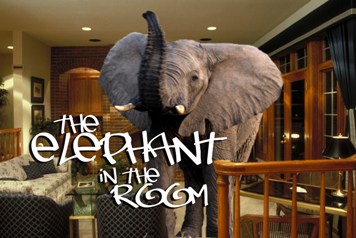
Mary Karr is an American poet and memoirist. She was born on January 16, 1955 in Groves, Texas to JP and Charlie Marie Karr. Growing up in east Texas Mary developed a biting sense of humor that brings her books to life. After a brief stay in Los Angeles, California Mary moved to St. Paul, Minnesota to attend Macalester College before leaving to travel the country for two years. She later enrolled into graduate school at Goddard College in 1979. This is where she met friend and mentor Tobias Wolff. In 1983, Mary married poet Mike Milburn they had one son Dev, before they later divorced. Mary has served as assistant professor at Tufts University, Emerson College, Harvard and Sarah Lawrence College. Karr has received numerous awards and accolades including the Guggenheim Fellowship, Pushcart Prize, Bunting Fellowship (Radcliffe College), The Whiting Writer's Award National Endowment for the Arts grant. She is currently Jesse Peck professor at Syracuse University in New York.
The Liar's Club

In 1995 Mary Karr exploded into the writing world with a bang. The Liars’ Club tells of Karrs troubled childhood in fictional Leechfield, Texas. With a father who is not around, a mother she says “Fancied herself a bohemian Scarlett O’Hara” (pg 11 Liars Club) and stead fast older sister Lecia, Mary’s family draws you in with all there eccentricities. The Liars’ Club received critical acclaim and stayed on the New York Times best sellers list for over a year. In 1996 Mary received the PEN/Martha Albrand Award for best first non-fiction work.

"At some point the fire fades to orange background, and I stare only at mother's face. It is all streaked up with lipstick and soot, so she looks like a bonifide maniac." (Liar's Club, p 152) You can relate Mary's childhood to that of her mother's favorite song "Mack the Knife". This depicts how Mary's mother at times can be deceiving and give the illusion that she is content in her role as a matriarch keeping her teeth tightly concealed beneath her smile. Through out the book you see the mother's mood go from stable to "nervous". It is in these times of nervousness that Charlie Marie bears her teeth.
"Oh the shark has zippy teeth, dear,
And he shows them pearl whites.
Just a jack knife has his teeth, dear,
And he keeps them out of sight..." (Liar's Club, p 89)
Cherry

In September 2001 Mary Karr leapt back into the New York Times best sellers list, once again, with her insatiable coming of age memoir Cherry. With her no nonsense humor and raging hormones Karr weaves a delicate web that is an adolescents girls sexual awaking. Cherry is at times shocking but hard to put down. It also divulges into the murky waters of Karr's use of illegal drugs and alcohol. Enamored with the Hippie culture and a group of laid back surfers Mary dives head first into the world of LSD, marijuana and pills. Of the experience she says “I also learned about funerals early. The book opens when I'm moving to California with this bunch of surfers who hollowed out a board to transport a brick of pot and various pharmaceuticals. Most of them went to prison. Two were suicides. One vanished into the Witness Protection Program. The only ones thriving today are me and my pal Doonie, and we both stopped drinking and drugging more than a decade ago. That says something about how the countercultural winds blew over me.” (1997-2008 Barnesandnoble.com llc)
(http://search.barnesandnoble.com/Cherry/Mary-Karr/e/9780141002071#EXC )
"Sure you were told that drugs cut a coiled and downward swerving path to degradation if not death. That was part of their allure." (Independent News and Media Limited) Littered with drugs, Jimmy Hendrix, overdoses, and suicide Cherry will pull at your heart and leave tears of laughter in your eyes.
Sinners Welcome

In 1996 Mary Karr shocked her fans by converting to Catholicism. She did so after an ex-heroin addict told her to get on her knees and pray for help to stop drinking. She took the advice and from it birthed a new look on life and her fourth volume of poetry, Sinners Welcome. Of the choice she made to stop drinking she says, "I haven't had a drink for about 16 years. It just took three minutes a day. When I first started praying, it was just, ""Help me stay sober. Thanks."" (www.beliefnet.com)
When asked about the title and how she chose the name Mary states, "At the church I went to in Syracuse, there is a banner outside that says "Sinners Welcome". The church is located in the poorest part of Syracuse, where all half-way houses are. Therefore, about 20-30% of the parish are disabled, either physically or mentally. I always loved walking in under that banner. I used to think you had to be good to go to church. Turns out you can go whether or not you have been to confession. Who needs it more than a sinner?" (www.beliefnet.com) In Sinners Welcome, Mary Karr takes a daring leap by mixing faith, love, and the remnants of a rebellious adolescent all into one book.
How the reader can relate to Karrs works
Mary Karr said it best when she told David Ian Miller, "On a good day for me, I'm in touch with the human heart, the human comedy, and the human drama." (www.sfgate.com, Finding My Religion) A well rounded and provocative writer, Karr draws on the three things we crave as humans. Throughout her books and poems she is able to consistently pull the reader in with a cynical best friend like humor.
Work Cited:
Barnesandnoble.com llc 1997-2008
http://search.barnesandnoble.com/Cherry/Mary-Karr/e/9780141002071#EXC
Belief Net
http://www.beliefnet.com/Faiths/Christianity/Catholic/2006/06/Mary-Karr-Guided-By-Prayer.aspx
Google Images
Google.com
Karr, Mary
Liars’ Club
1995 Published by
Penguin Books
375 Hudson St. New York, New York 10014
Lappin, Elena
(Cherry by Mary Karr) Article
Friday, 22 June 2001
Copyright 2008 Independent News and Media Limited
http://www.independent.co.uk/arts-entertainment/books/reviews/cherry-by-mary-karr-675087.html
Miller, David Ian
"Finding my religon"
YouTube.Com
Group members
Kevin S. Dehn , Jeanette DiGiovenale,Jennifer Hasselbach






















 People find a lot of humor in the movement of the human body when it goes against what they try to portray constantly. Many people will freeze before risking looking awkward. Comedians will distort their appearance to the most extreme from societal norms for humor. Even more humor is found from those who do not realize their physical insufficiencies. When someone is dancing poorly and believes they are doing well, Hobbes theory states that people find that even more humorous than if someone danced knowingly bad.
People find a lot of humor in the movement of the human body when it goes against what they try to portray constantly. Many people will freeze before risking looking awkward. Comedians will distort their appearance to the most extreme from societal norms for humor. Even more humor is found from those who do not realize their physical insufficiencies. When someone is dancing poorly and believes they are doing well, Hobbes theory states that people find that even more humorous than if someone danced knowingly bad. YouTube can find you 30,000 video clips if you type “hit in balls” in the search engine. YouTube also finds nearly 15,000 video clips to the search “funny falls”. The first video that shows for “funny falls” has been watched over two million times.
YouTube can find you 30,000 video clips if you type “hit in balls” in the search engine. YouTube also finds nearly 15,000 video clips to the search “funny falls”. The first video that shows for “funny falls” has been watched over two million times.

